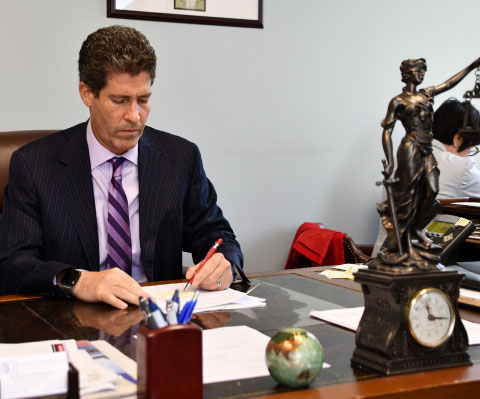Philadelphia Car Accident Lawyers Discuss School Bus Safety
September 7, 2015

The summer days are winding down and soon the familiar sight of big yellow buses will be returning to the roadways. The National Safety Council reports that 25 million students across the U.S. ride in school buses each year. School buses have a solid record for keeping students safe and are reported to be 13 times safer than the family car; it is the safest mode of motorized transportation for school age children.
This being said, it is important to note there are no federal laws requiring seat belts on full sized school buses. The National Highway and Traffic Safety Association (NHTSA) purports the design of the buses keep passengers safe with the thickly padded high back bench seats. They also report the cost of requiring seat belts in all buses will be too great for many communities.
On the other side of the argument for seat belts is the American Academy of Pediatrics, which has supported installing three point harnesses (like the seat belts found in cars) since 1996. Their contention is the design of the seats will not protect the passengers in a rollover bus accident.
With or without seat belts, there are steps school children and drivers should take to make the ride to and from school as safe as possible.
Guidelines for School Bus Safety
Waiting for the Bus
- Stay away from the road and traffic.
- Avoid roughhousing and reckless behavior.
- Stay out of the street, alleys and off private property.
Boarding the Bus
- Line up away from the street as the bus approaches.
- Wait until the bus comes to a full stop and the doors are opened before approaching the bus.
- Use the handrail to enter the bus.
Riding the Bus
- Speak quietly and keep noises to a minimum so you do not distract the driver.
- Stay in your seat.
- Keep arms and head inside the windows.
- Maintain a clear aisle- including books, bags and legs.
- Gather belongings together before reaching your stop.
- Wait for the bus to come to a complete stop before standing up to exit.
Getting Off the Bus
- Look out the back window as you prepare to exit to make sure the cars behind the bus have stopped.
- Use the handrail.
- If you drop something as you exit or outside of the bus, notify the bus driver before retrieving it.
- Cross only in front of the bus and take five giant steps in front of the bus as you do so to ensure the bus driver can see you.
- Make eye contact with the bus driver before you cross in front of the bus and wait for them to signal for you it is ok to cross.
- As you prepare to cross the street, look left, right, and left again.
- Stay away from the rear of the bus at all times, especially the wheels.
Driving Near School Buses
- Be alert during the hour before and hour after school when school buses are picking up and dropping off children.
- Always stop for a bus when it has its lights flashing and look for children boarding and exiting the bus. It is the law.
The biggest danger to children is when boarding and exiting the bus. With extra vigilance in every community, more school children can be kept safe.
Philadelphia Bus Accident Lawyers at Nerenberg Law Associates, P.C. Help Victims of Vehicle Crashes
If you or someone you love has been involved in a bus accident, contact the experienced bus accident lawyers at Nerenberg Law Associates, P.C. Call 215-569-9100, for a no obligation free consultation with one of our car accident lawyers, or contact us online. With our offices located in Center City Philadelphia, we serve clients in the Philadelphia area and Montgomery County, Delaware County, Bucks County and Chester County, as well as in New Jersey.

